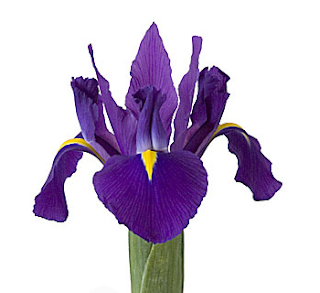 During the busy
Mother’s Day rush we heard from our friends at Society of American Florists
(SAF) asking for a bit of our insight on making viral videos for their June
2013 issue of Floral Management, which is all about online presence, social
media and all things tech for the floral industry this month.
During the busy
Mother’s Day rush we heard from our friends at Society of American Florists
(SAF) asking for a bit of our insight on making viral videos for their June
2013 issue of Floral Management, which is all about online presence, social
media and all things tech for the floral industry this month.
While we consider
ourselves no experts in this field, we were happy to share what we do know…
besides, all the fun we had making our “Gangnam Style” parody, “Oppa Stein Your
Florist Style”, how could we keep what we do know a secret?
Floral Management
writer Mary Westbrook sent us a few questions and we were thrilled to read our
response when the magazine’s digital issue was released on June 1st.
Since then we have been invited to speak at SAF’s 129th Annual Convention
in Phoenix, AZ as a part of their panel on social media in September!
MASTER THE ART:
MAKE A HIGH QUALITY, VIRAL VIDEO
Jennifer Kelly, Stein Your Florist Company, Philadelphia
Mastermind behind recent videos, including a “Gangnam Style” parody.
Our videos get the best response when we hit current events and relate them back to flowers. We keep our eyes on the Internet and TV and try to strike while the iron is hot.
Our Canon Vixia HFG10 captures great HD footage, easily connects to a computer with a USB port for editing, and is simple to use. A tripod will keep the picture from shaking. We’ve also used our iPhones for videos -- that’s what we did when Hurricane Sandy hit our area and the shops were closed (with the camera inside).
To edit, we use Windows Live Movie Maker. It’s simple to use and was already installed on a few of our computers when we purchased them, so there was nothing extra to buy. Audacity is a free editing software that really improves video quality by getting rid of humming refrigerators and ringing telephones.
We upload finished videos to YouTube and then post to our blog and social media channels and send out an email blast. Out stores also have large flat screen TVs connected to computers where our customers can check out our videos as well as photos of our work… but social media spreads the word best.
Stein Your Florist on YouTube: www.youtube.com/user/SteinYourFlorist
Mastermind behind recent videos, including a “Gangnam Style” parody.
Our videos get the best response when we hit current events and relate them back to flowers. We keep our eyes on the Internet and TV and try to strike while the iron is hot.
Our Canon Vixia HFG10 captures great HD footage, easily connects to a computer with a USB port for editing, and is simple to use. A tripod will keep the picture from shaking. We’ve also used our iPhones for videos -- that’s what we did when Hurricane Sandy hit our area and the shops were closed (with the camera inside).
To edit, we use Windows Live Movie Maker. It’s simple to use and was already installed on a few of our computers when we purchased them, so there was nothing extra to buy. Audacity is a free editing software that really improves video quality by getting rid of humming refrigerators and ringing telephones.
We upload finished videos to YouTube and then post to our blog and social media channels and send out an email blast. Out stores also have large flat screen TVs connected to computers where our customers can check out our videos as well as photos of our work… but social media spreads the word best.
Stein Your Florist on YouTube: www.youtube.com/user/SteinYourFlorist































